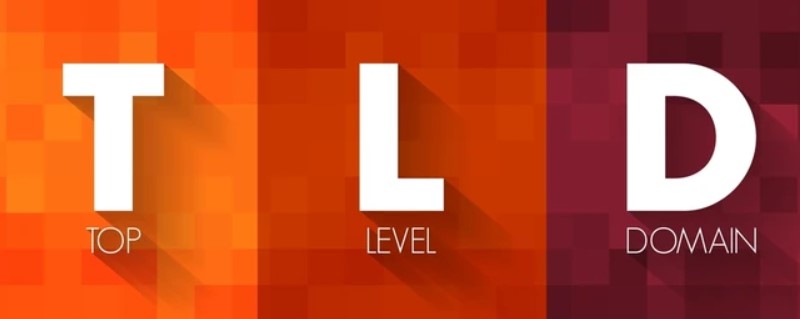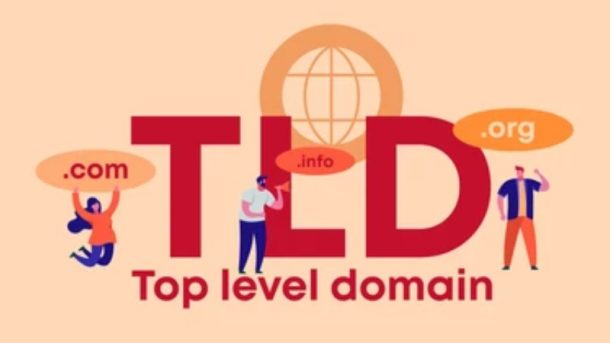Are you familiar with top-level domains (TLD)? What makes .org different from .com or .tech from .io? What do these letters even mean in website addresses, and what makes them essential in the first place?
Just so you know, these letters are examples of TLDs, and they give your potential visitors a good idea of what your website does, who it is meant for, and if they can trust it.
Table of Contents:
What are Top-Level Domains (TLD)?
TLDs, top-level domains, or domain extensions, are the last portion of your website’s domain. The most common and famous TLD is .com, although there are still a lot out there, such as .tech, .org, .edu, and .net, to mention a few.

TLDs don’t only appear out of nowhere. Internet Corporation for Assigned Names and Numbers or ICANN manages their usage and development. ICANN is a nonprofit organization that maintains and coordinates IP addresses, root servers, and domain names, essential functions that maintain a navigable and stable global internet.
Examples and Types of TLDs
TLDs have several types recognized and managed by the ICANN, each serving different registry requirements and purposes. Here are the types and examples of TLDs:
Country Code Top-Level Domains or ccTLD
ccTLDs represent countries like .us for the USA, .br for Brazil, and .uk for the United Kingdom. Some ccTLDs are restricted to the specific area’s residents, while the rest are open to everyone. Google and the other major search engines may also use ccTLDs for geotargeting your website.
Generic Top-Level Domains or gTLD
Generic top-level domains are domain extensions most of you might already be familiar with, like .org and .com. Although the intent is for websites to use domains relevant to their purposes, such as .org for organizations and .com for commercial businesses, anyone can use gTLDs.
When the internet was just getting started, only three gTLDs were available back then: .com, .net, and .org. With the growth in demand, ICANN came up with more available domain extensions. It was in 2011 when the organization started to allow individuals or companies to have their branded gTLDs registered.

Although .com remains the most common and popular gTLD, other unusual gTLDs are getting more renowned. So don’t be surprised if you see sites like Fage using the domain usa.fage or Canon using global.canon. Some business websites also use websites that end in .dog, .pizza, .team, and other similar novelty gTLDs.
Sponsored Top-Level Domains or sTLD
Some TLDs are restricted to particular types of entities such as .gov, which the US government uses, .mil, used by the United States military; and .edu used by accredited universities and colleges.
Other Types
Some other types of TLDs are not that common or only meant for specific purposes, such as infrastructure like .arpa, or testing, such as .test, .invalid, .localhost, or .example.
Effect of Domain Extensions on Customer Experience and Trust
Domain extensions offer information to your website information about what they can expect once they arrive on your website.
For instance, when you type in companyname.io, it implies that you will be visiting the website of a tech company while visiting a website named companyname.pizza, it means you will be arriving at a pizza store.
But beyond the usual common sense explanation, TLDs play a significant role in gaining the trust of visitors and customers. For the longest time, .com domains are often seen as more legitimate.
On the other hand, TLDs such as .review, .zip, or .biz might be seen as more likely to be untrustworthy or scammy. Since there is a higher chance for customers to visit or click on trusted sites, this perception is critical.
It is also a must that your potential website visitors can easily remember the URL of your website. Since .com is also the most popular and common domain extension, this is the most unforgettable, and visitors might even assume that it is the TLD of your website every time they search for you online. Many mobile browsers also automatically suggest .com whenever users type in a URL.
A study also revealed that .com had been rated by users as the most trustworthy domain extension, earning the top marks in terms of being easy to recall. The .co TLD ranked second on metrics, with .biz being the least trusted.
Impact of TLDs on SEO
Search engines such as Google display and catalog top-level domains (TLD), although you won’t see any direct connection between TLDs and search rankings.
It means that the algorithms of Google will treat a .com similar to how they treat a .pizza in sending traffic, indexing, and crawling, all else considered equal.
But remember that customer perception and trust affect click-through rate, while click-through rate affects efforts in SEO.
There is also a technical reason for paying attention to SEO and top-level domains: the profile of the backlink TLDs. Quality websites are recommended to link back to your pages, with .edu and .gov sites being most likely to carry more authority than .info or .biz sites.
See to it that you always keep an eye on your backlinks, and once you notice a high number of spammy TLDs, it might be time to disavow these links.
Always Choose the Best TLDs for Websites
Choosing the most suitable top-level domains for websites depends on the purpose of the organization or company. Generally speaking, however, make sure you don’t waste time snatching it up if the .com for your company or brand name is still available.
Considering the limited number of .com domains and their tremendous popularity, you might have difficulty finding an option relevant to your website.
Top-level domains (TLD) are at the top for this reason. Be sure to use the right one for your website and make it more trustworthy and reliable in the eyes of visitors.















